Abarth 500 595 695 vs SsangYong Korando – Which one offers the better deal?
Two cars, one duel: Abarth 500 595 695 meets SsangYong Korando.
Which one wins in performance, efficiency and value for money? Find out now!
Costs and Efficiency:
Looking at overall running costs, both models reveal some interesting differences in everyday economy.
SsangYong Korando has a clearly perceptible advantage in terms of price – it starts at 27000 £, while the Abarth 500 595 695 costs 32600 £. That’s a price difference of around 5571 £.
In terms of energy consumption, the advantage goes to the SsangYong Korando: with 16.80 kWh per 100 km, it’s slight more efficient than the Abarth 500 595 695 with 17.10 kWh. That’s a difference of about 0.30 kWh.
As for range, the SsangYong Korando performs noticeable better – achieving up to 339 km, about 74 km more than the Abarth 500 595 695.
Engine and Performance:
Under the bonnet, it becomes clear which model is tuned for sportiness and which one takes the lead when you hit the accelerator.
When it comes to engine power, the SsangYong Korando has a to a small extent edge – offering 190 HP compared to 155 HP. That’s roughly 35 HP more horsepower.
In acceleration from 0 to 100 km/h, the Abarth 500 595 695 is distinct quicker – completing the sprint in 7 s, while the SsangYong Korando takes 8.40 s. That’s about 1.40 s faster.
In terms of top speed, the SsangYong Korando performs slightly better – reaching 191 km/h, while the Abarth 500 595 695 tops out at 155 km/h. The difference is around 36 km/h.
There’s also a difference in torque: SsangYong Korando pulls clearly perceptible stronger with 360 Nm compared to 235 Nm. That’s about 125 Nm difference.
Space and Everyday Use:
Cabin size, boot volume and payload all play a role in everyday practicality. Here, comfort and flexibility make the difference.
Seats: SsangYong Korando offers somewhat more seating capacity – 5 vs 4.
In curb weight, Abarth 500 595 695 is slight lighter – 1410 kg compared to 1517 kg. The difference is around 107 kg.
In terms of boot space, the SsangYong Korando offers decisively more room – 551 L compared to 185 L. That’s a difference of about 366 L.
In maximum load capacity, the SsangYong Korando performs convincingly better – up to 1248 L, which is about 698 L more than the Abarth 500 595 695.
When it comes to payload, SsangYong Korando somewhat takes the win – 463 kg compared to 385 kg. That’s a difference of about 78 kg.
Who wins the race?
The SsangYong Korando proves to be wins the duel decisively and therefore becomes our DriveDuel Champion!
SsangYong Korando is the better all-rounder in this comparison.
 @ SsangYong Motor / KG Mobility
@ SsangYong Motor / KG Mobility
SsangYong Korando
Abarth 500 595 695
The Abarth 500, particularly in its 595 and 695 renditions, captures the spirit of Italian motoring with its compact yet aggressive design. Known for its lively performance and distinctive styling, this little powerhouse is a joy to drive, offering an engaging experience that appeals to enthusiasts. With its rich motorsport heritage, the Abarth 500 embodies the essence of fun and excitement on both the streets and the race track.
details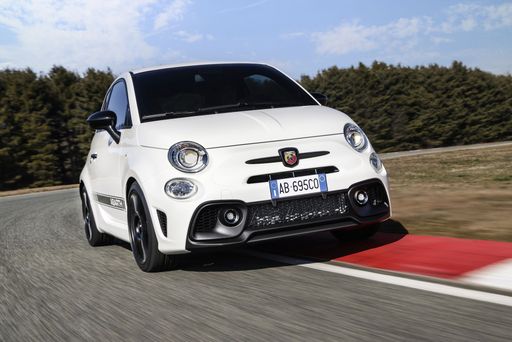 @ Abarth / Stellantis Media
@ Abarth / Stellantis Media
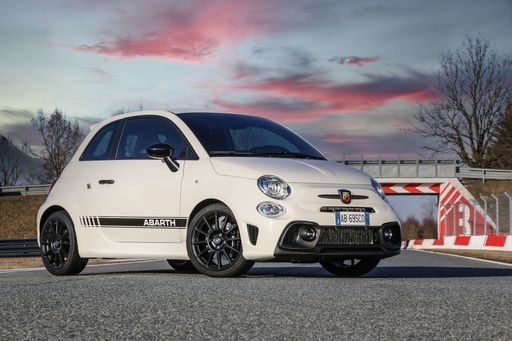 @ Abarth / Stellantis Media
@ Abarth / Stellantis Media
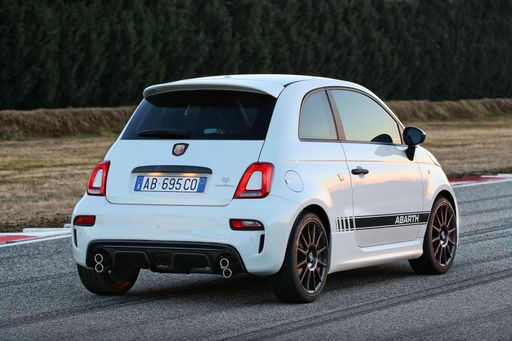 @ Abarth / Stellantis Media
@ Abarth / Stellantis Media
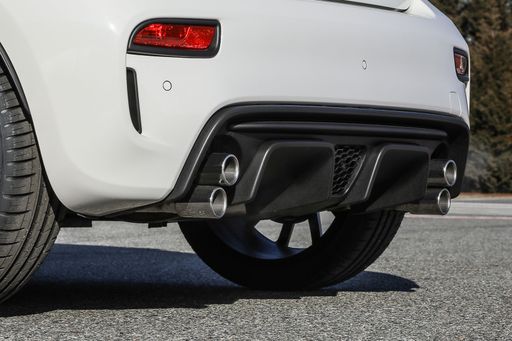 @ Abarth / Stellantis Media
@ Abarth / Stellantis Media
 @ Abarth / Stellantis Media
@ Abarth / Stellantis Media
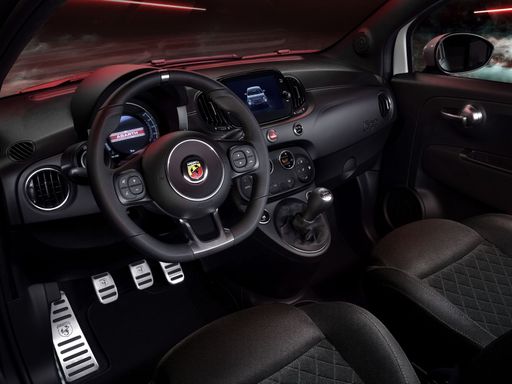 @ Abarth / Stellantis Media
@ Abarth / Stellantis Media
SsangYong Korando
The SsangYong Korando offers a blend of contemporary design and practicality, making it an appealing choice for urban adventurers. Its spacious interior and comfortable seating ensure a pleasant driving experience for both driver and passengers. With its reliable performance and advanced features, the Korando stands out in the competitive SUV market.
details @ SsangYong Motor / KG Mobility
@ SsangYong Motor / KG Mobility
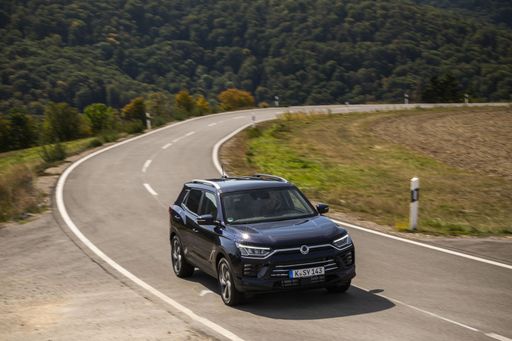 @ SsangYong Motor / KG Mobility
@ SsangYong Motor / KG Mobility
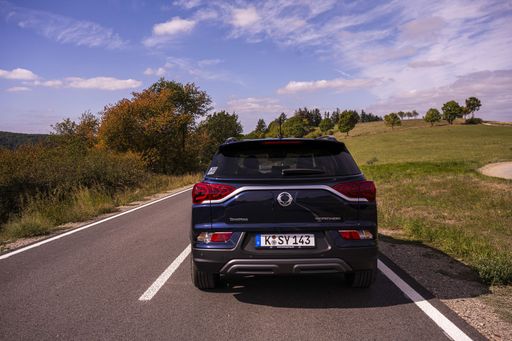 @ SsangYong Motor / KG Mobility
@ SsangYong Motor / KG Mobility
 @ SsangYong Motor / KG Mobility
@ SsangYong Motor / KG Mobility
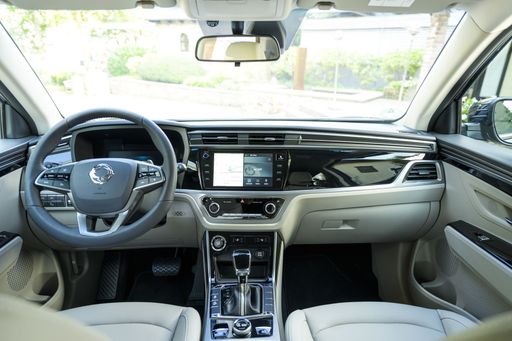 @ SsangYong Motor / KG Mobility
@ SsangYong Motor / KG Mobility
 @ Abarth / Stellantis Media
@ Abarth / Stellantis Media
|
 @ SsangYong Motor / KG Mobility
@ SsangYong Motor / KG Mobility
|
|
|
|
Costs and Consumption |
|
|---|---|
|
Price
32600 - 39400 £
|
Price
27000 - 42000 £
|
|
Consumption L/100km
-
|
Consumption L/100km
7.5 - 8.6 L
|
|
Consumption kWh/100km
17.1 - 18.8 kWh
|
Consumption kWh/100km
16.80 kWh
|
|
Electric Range
242 - 265 km
|
Electric Range
339 km
|
|
Battery Capacity
37.80 kWh
|
Battery Capacity
-
|
|
co2
0 g/km
|
co2
0 - 197 g/km
|
|
Fuel tank capacity
-
|
Fuel tank capacity
50 L
|
Dimensions and Body |
|
|---|---|
|
Body Type
Hatchback
|
Body Type
SUV
|
|
Seats
4
|
Seats
5
|
|
Doors
3
|
Doors
5
|
|
Curb weight
1410 - 1435 kg
|
Curb weight
1517 - 1840 kg
|
|
Trunk capacity
185 L
|
Trunk capacity
551 L
|
|
Length
3673 mm
|
Length
4450 - 4465 mm
|
|
Width
1682 mm
|
Width
1870 mm
|
|
Height
1518 mm
|
Height
1620 - 1645 mm
|
|
Max trunk capacity
550 L
|
Max trunk capacity
1248 L
|
|
Payload
370 - 385 kg
|
Payload
410 - 463 kg
|
Engine and Performance |
|
|---|---|
|
Engine Type
Electric
|
Engine Type
Petrol, Electric
|
|
Transmission
Automatic
|
Transmission
Manuel, Automatic
|
|
Transmission Detail
-
|
Transmission Detail
Manual Gearbox, Automatic Gearbox, Reduction Gearbox
|
|
Drive Type
Front-Wheel Drive
|
Drive Type
Front-Wheel Drive, All-Wheel Drive
|
|
Power HP
155 HP
|
Power HP
163 - 190 HP
|
|
Acceleration 0-100km/h
7 s
|
Acceleration 0-100km/h
8.40 s
|
|
Max Speed
155 km/h
|
Max Speed
156 - 191 km/h
|
|
Torque
235 Nm
|
Torque
260 - 360 Nm
|
|
Number of Cylinders
-
|
Number of Cylinders
4
|
|
Power kW
114 kW
|
Power kW
120 - 140 kW
|
|
Engine capacity
-
|
Engine capacity
1497 cm3
|
General |
|
|---|---|
|
Model Year
2023
|
Model Year
2021 - 2023
|
|
CO2 Efficiency Class
A
|
CO2 Efficiency Class
F, G, A
|
|
Brand
Abarth
|
Brand
SsangYong
|
Is the Abarth 500 595 695 offered with different drivetrains?
The Abarth 500 595 695 is offered with Front-Wheel Drive.
The prices and data displayed are estimates based on German list prices and may vary by country. This information is not legally binding.
